There was a time when the idea of an international space station would have been seen as little more than fantasy. After all, the human spaceflight programs of the United States and the Soviet Union were started largely as a Cold War race to see which country would be the first to weaponize low Earth orbit and secure what military strategists believed would be the ultimate high ground. Those early rockets, not so far removed from intercontinental ballistic missiles (ICBMs), were fueled as much by competition as they were kerosene and liquid oxygen.
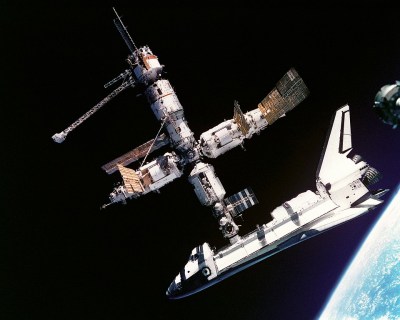
Luckily, cooler heads prevailed. The Soviet Almaz space stations might have carried a 23 mm cannon adapted from tail-gun of the Tu-22 bomber to ward off any American vehicles that got too close, but the weapon was never fired in anger. Eventually, the two countries even saw the advantage of working together. In 1975, a joint mission saw the final Apollo capsule dock with a Soyuz by way of a special adapter designed to make up for the dissimilar docking hardware used on the two spacecraft.
Relations further improved following the dissolution of the Soviet Union in 1991, with America’s Space Shuttle making nine trips to the Russian Mir space station between 1995 and 1997. A new era of cooperation had begun between the world’s preeminent space-fairing countries, and with the engineering lessons learned during the Shuttle-Mir program, engineers from both space agencies began laying the groundwork for what would eventually become the International Space Station.
Unfortunately after more than twenty years of continuous US and Russian occupation of the ISS, it seems like the cracks are finally starting to form in this tentative scientific alliance. With accusations flying over who should take the blame for a series of serious mishaps aboard the orbiting laboratory, the outlook for future international collaboration in Earth orbit and beyond hasn’t been this poor since the height of the Cold War.
The Station’s Wild Ride
The most recent drama started with the docking of the long-awaited Russian Nauka module on July 29th. While it was successful in the end, the process was anything but smooth, resulting in an unexpected ride for the occupants of the Station.
After more than a decade of delays and redesigns, the arrival of Nauka would have been a historic event even had things gone according to plan. With a length of 13 meters (43 feet) and a mass of 20,300 kg (44,800 lb), the new multi-purpose module dwarfed all but the Zarya and Zvezda segments that served as the nucleus of the Station during initial construction. The new module wasn’t just notable for its size, either. With the Space Shuttle no longer in service, Nauka had to fly to the ISS under its own power and perform an autonomous docking; a sharp departure from how the majority of previous modules had been transported and installed.
Despite some early glitches everything appeared to have gone according to plan, and Russian cosmonauts were preparing to open the hatches to the new module when it suddenly began firing its onboard thrusters. Preliminary investigations have determined that Nauka’s guidance computer erroneously believed it to still be in free-flight mode, and for reasons which are still not fully understood, its automated systems attempted to back it away from the Station. But with the module firmly attached to the bottom-most docking port of the ISS, Nauka’s thrusters instead begin rotating the entire complex around its center of mass.
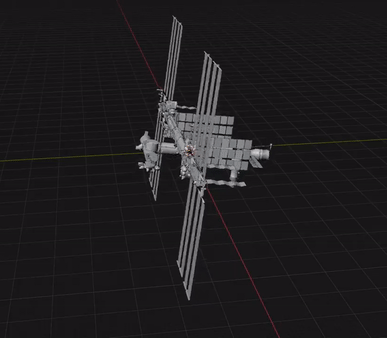
The Station’s guidance system noticed the shift from its intended position, and attempted to compensate using the Control Moment Gyroscopes (CMGs). When this wasn’t enough to stop the spin, thrusters on the Zvezda module and eventually the docked Progress MS-17 resupply vehicle were commanded to fire against the direction of rotation. While initial NASA estimates claimed the Station rotated only 45° off of its intended attitude, the agency has since admitted the complex spun 540° over the course of approximately 45 minutes.
The rate of rotation was low enough that crew members reportedly didn’t notice it until notified by Mission Control, but the tug of war between the modules which was causing the highly unusual maneuver was putting the structure of the Station under stresses it was never designed for. The slow tumble was also making communications difficult, as the Station’s antennas were continuously being pulled away from their intended alignment. Zebulon Scoville, the NASA Flight Director on duty, made the determination to officially declare a “spacecraft emergency” and the docked SpaceX Crew Dragon was powered up should the crew members be ordered to evacuate.
As Scoville later explained in an interview with The New York Times, neither the crew aboard the Station nor Mission Control in Huston actually had the ability to command Nauka during the ordeal. As the module had not been fully integrated into the Station’s systems it could only be controlled from a Russian ground station, but none were in range. In the end, it’s believed that the module’s thrusters only stopped firing because they ran out of propellant.
In a scathing article published by IEEE Spectrum, former NASA engineer James Oberg said the mishap was a worrying sign that the space agency is returning to the complacent mindset that doomed Shuttles Challenger and Columbia. Specifically he questions the decision making process that allowed Russia to dock such a large and powerful module to the ISS without any provision for the crew or Mission Control to take command of it in an emergency situation, and calls for an independent investigation to determine if international politics is being given priority over crew safety.
An Explosive Accusation
In an apparent effort at damage control, Russian news agency TASS published a rebuttal to what it claimed was a systematic attempt by Western journalists to sow doubt in the country’s space program. With the support of an unnamed high-ranking official within Roscosmos, author Mikhail Kotov attempted to debunk twelve criticisms he’s identified in coverage from publications as diverse as Ars Technica and The Daily Beast.
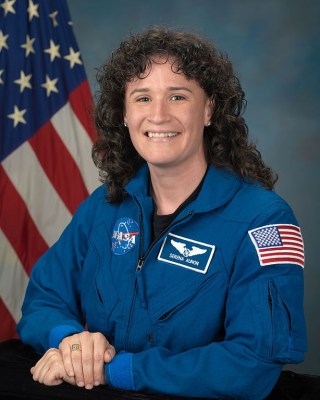
Many of the claims have to do with funding, or more accurately, the lack thereof. But Kotov dismisses the idea that the meager budget of Roscosmos leads to shoddy engineering or limited innovation, in fact, he counters that fiscal conservatism is one of the agency’s core strengths. The article also goes on to explain the country’s efforts to replace Soviet-era facilities, spacecraft, and boosters.
The list of relatively timid quasi-official statements likely would have gone unnoticed for the most part if it wasn’t for the inclusion of an exceptionally inflammatory and completely unsubstantiated claim that the hole discovered in a Soyuz capsule during a 2018 investigation was not the product of an assembly mistake as long assumed, but a willful act of sabotage by American astronaut Serena Auñón-Chancellor. Quoting the anonymous official, Kotov states the first-time astronaut may have suffered an “acute psychological crisis” due to a blood clot in her neck, and that she could have damaged the Soyuz capsule in an effort to expedite the crew’s return to Earth.
In response to this unprecedented ad hominem attack against one of their astronauts, and potentially the unauthorized disclosure of a private medical condition she may have suffered while in orbit, NASA could apparently only muster the most tepid of responses. Kathy Lueders, the head of NASA’s Human Spaceflight Program, took to Twitter to say the agency stands behind its astronauts and that they don’t believe there’s any credibility to the allegations. NASA Administrator Bill Nelson later retweeted Lueder’s message, but no official post was added to the agency’s public relations website.
When it comes to defending the reputation of Auñón-Chancellor, a woman that has dedicated more than a decade of her life to the agency, it would appear NASA believes a 37 word tweet should suffice. It’s difficult to see such a milquetoast response as anything other than the administration worrying more about the political ramifications of definitively contradicting Roscosmos than the career of one of their astronauts.
A Parting of Ways
NASA and most of its international partners have pledged to support the International Space Station until 2028 or 2030, but Russia has been hesitant to commit to extending their involvement past 2024. As recently as June 7th, Roscosmos Director General Dmitry Rogozin has been quoted as saying Russia will terminate their involvement with the ISS program in 2025 if US sanctions against the country aren’t lifted by the White House. Earlier in the year, Roscosmos also cited concerns over the age of the ISS as one of the reasons they were planning on launching a domestically-developed outpost known as the Russian Orbital Service Station (ROSS) into a near-polar orbit. Its proposed course over the Earth would make ROSS an ideal platform for observing Russia and the Arctic, but puts it largely out of reach for spacecraft launching from Cape Canaveral.
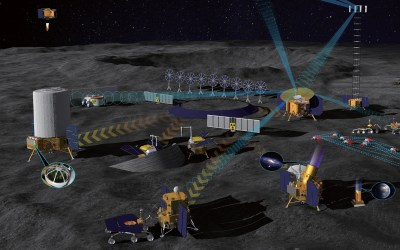
The growing rift between the countries doesn’t end in low Earth orbit, either. Despite hopes they would provide a module for NASA’s Lunar Gateway station, Russia is no longer listed among NASA’s international partners for the project. Instead, Roscosmos and the China National Space Administration (CNSA) have announced plans to construct what they’re calling the International Lunar Research Station (ILRS).
The robotic outpost would largely eschew human explorers in favor of advanced landers, telescopes, and highly mobile rovers. Neither country has provided a firm timeline for development and construction of the ILRS, but it’s not expected to become operational until the 2030s. Short duration human missions to the ILRS, if they happen, wouldn’t begin until closer to 2040.
While Russia will almost certainly remain involved with the International Space Station program until ROSS is operational, it seems clear that the end of the country’s scientific alliance with the United States is on the horizon. Though an improved relationship between the White House and Kremlin in the next few years could see Roscosmos contribute to NASA’s Artemis moon program in some capacity, sharing spaceflight technology with China is a line in the sand that the United States is unlikely to cross.

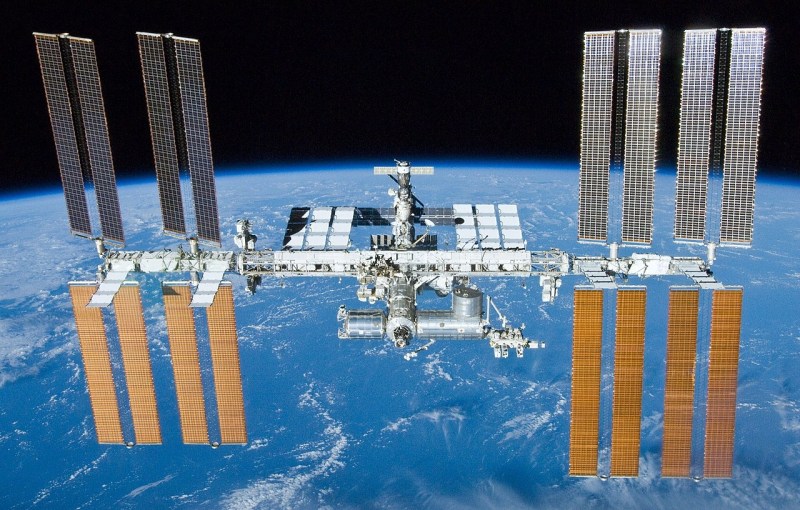
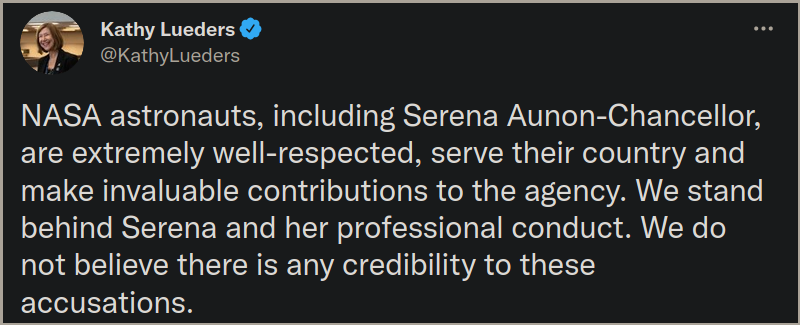













You are beating around the bush. The real reason for the demise of ISS is continuing and ever increasing degree of sanctions against Russia. It came to a point where it’s impossible to continue joint efforts with ISS.
China realized that cooperation with USA will be impossible long ago, and they built their own station out of necessity.
Including “As recently as June 7th, Roscosmos Director General Dmitry Rogozin has been quoted as saying Russia will terminate their involvement with the ISS program in 2025 if US sanctions against the country aren’t lifted by the White House.” doesn’t really seem like beating around the bush to me.
I think it’s far more complex that just one country being at fault. Tensions between the US and Russia have never really disappeared since the cold war, and some areas are considerably worse now. War now is less about killing the other party directly, the weapons are economic and virtual. Russia turns a blind eye to hackers within its borders (at best case, worst case the hackers could very well be secretly state sponsored) who target both critical US infrastructure and businesses and when the US cant/wont overtly retaliate they issue sanctions instead. So if you are being completely honest about the situation you have to admit there is no completely innocent actor in this situation, both the US and Russia would be to blame for a falling out. I know it’s easy for each of us to want pin the blame on whichever horse we happen to be backing, but the truth is the world isn’t that simple.
Like Chinese Communists are not hacking at our infrastructure and the Pentagon, as well as stealing our IP on a industrial scale, all the while selling the cartels the Fentanyl precursors by the ton. The same country that you can buy synthetic opioids and steroids over the web.
But we can’t mention them because American companies moved all their production to China and now we’re basically colonials dependent on a nation who hates us for basic goods.
Right now Russia is quite happy selling Europe NG and Oil, their military is a shadow of it once was. Designed for defence. In case you haven’t noticed it’s the US surrounding Russia with military assets.
When the top intelligence agency of a country traces cyber extortion back to another country that successfully targeted critical infrastructure I dont think you can claim they are only acting defensively. But here’s the thing, I’m pretty sure the big three are all guitly of it, I’m not taking sides on that!
IP address spoofing.
If they knew it was Russian government doing it, they would retaliate immediately with cyber attacks. Truth is they don’t, and therefore use Russian bogeyman to cover their own ineptitude.
lol they don’t have to hack our IP. Our corporations salivate at the chance to get some tasty market morsels and jump to bring their IP to Chinese shores. No one can honestly believe that anything else would be done by a system that ISNT CAPITALIST. This while we voluntarily indebt ourselves and junk our own factories.
Lets not forget that some of the sanctions against Russia is a direct result of the russian support of the insurgents in east ukraine and the shooting down of MH17.
It only seems that way if you comment without reading the whole article.
Maybe when Putin decides to stop the constant flow of cyber attacks and social engineering to sow domestic discord things might cool off, as it is, sanctions are not yet enough to stem the russian aggression, more serious reactions seem needed.
Nope. The ISS continuously logs pressure data, which means that investigators know the exact moment the leak began. At that time, Auñón-Chancellor was seen on CCTV performing her tasks over in the American section.
There was a very good Ars Technica article about it a few weeks ago.
Personally, I don’t think the hole was drilled onboard the ISS. It’s hard to imagine drilling a hole in the shell of a communal tin can without everyone else hearing what you’re up to.
Oh dang, you are right. There would be no way to put something in the hole that would start leaking at a later time.
… and your proof? Opinion without proof is just blind speculation.
No S, Sherlock. Did I say “I have proof that she drilled the hole”?
Other than someone stepping up and saying they did it, we will never *know*. That is why I said “Kinda seems”. Given the reaction to the event when it happened, and the lack-luster response from NASA given this straight-up accusation, it sure SEEMS like there is a possibility that she drilled the hole. If NASA really “stands behind” their astronaut, you’d think that they’d do more than a 37 word tweet from an employee’s account (as Tom pointed out in the article). That sort of non-response response from an organization usually means that they want to go on record, but not too loudly.
Then the big question is if you don’t have any proof and haven’t done any critical analysis why would you so readily believe in something like an astronaut committing sabotage? Idk, how Nasa responded being support to a single astronaut’s guilt is flimsy at best. At best you could make the point they didn’t want to stick their neck out to far and stir the pot, meanwhile not throwing her under the bus directly either.
What makes you think my statement was a statement of fact?
Carefully reread what I wrote, I didn’t say it was fact, I acknowledged it was an opinion. My point is when someone says “kinda seems like …” a normal person would tend to follow it up with why they think that, not just speculate and leave the actual important part of critical thinking up to the reader. Otherwise what’s the point of effectively pointing a finger and quickly running away afterwards?
One thing this doesn’t mention is the European’s and Japanese, for the moment at least the good ol’ USA hasn’t not made a big enough mess that majorly concerns any of them enough to pull out of co-operative space, though at times you wonder if they are trying…
Though the ISS as it is undoubtedly does have a finite lifetime I would not be surprised if it lasts longer than expected as it stands – putting up a replacement even with the rather impressive new heavier lift options getting ready for use is just too expensive compared to just cycling in a few new sections as need arises.
At worst I expect it ends up being a Russian lump and ‘international’ lump on similar but now separate orbits – as the Europeans are less likely to work with Russia – the bear at the doorstep, even if more tame than in the Soviet years isn’t exactly friendly, and is on the doorstep, and the Japanese are very unlikely to work with China (which the Russians almost certainly will if they keep their part of the ISS flying at all) – While the USA can be annoying to its friends – like pulling out of Afghanistan so rapidly without warning, on the whole it is too far away and ideologically and economically too similar to cause major trouble…
With all due respect to the Japanese and Europeans, their involvement isn’t really mission critical. Of course NASA appreciates the assistance, monetary or otherwise, but JAXA or ESA deciding they no longer want to participate in the ISS wouldn’t endanger the station as a whole.
Russia on the other hand, is responsible for much of the stations core capabilities. It’s sometimes been said that Russia could disconnect their modules and still have a functioning station, but that’s not the case for NASA’s side (at least, not yet).
Never said it did, but it does make it International… If the USA and Russia can’t figure a way to get along in space longer term the ISS will remain I not USSS or perhaps ASS because of their involvement. Also don’t sell the the rest of the worlds space contributions short, they may not pay for it all, house launch sites etc, but they are very involved in various aspects. However I do on the whole agree, the Japanese are too small and the Europeans can never really pull together well enough to make up for the shortfall created should the Russians pull out.
As it stands I’m not sure either side is really capable of being a properly functional station if split, but definitely neither is impossibly far away from it.
Nah.. at various times that may have been true about Russia but not for a long time. Electricity, life support, communications, 2 of the lab modules, and 4 of the crew berths among other things are all located on the US, ESA, JAXA side.
Would it be a PITA .. certainly. But we don’t need them anymore. It would be nice if we could continue working together, but that shouldn’t lead to complacency about our own capabilities.
Only the Russian segments have thrusters to maneuver the station and maintain orbit.
It’s possible to add this capability to the US side (and it’s something that’s been written about here on HaD), but if you split them up today, the NASA-managed half of the ISS would be doomed.
A highly inclined orbit for the ROSS station concept is not out of reach from cape canaveral, from florida you can launch to any orbit with an inclination > 28 deg North. It would however need greater fuel use to reach higher inclination orbits then the current ISS orbit. A station in a low inclination orbit though, at 28degrees for canaveral or 0degrees on the equator, would genuinely be out of reach for Russia though, who can only launch from Baikonur (or further north) and even then can’t go straight east due to China so end up in orbits even more inclined than Baikonur’s latitude.
Shame people can’t realize if you work together building one big boat, instead of everyone building a little boat of their own, you can take more and go farther.
+1
Let’s hope the ISS will remain in orbit a little longer.
Even without a permanent crew, the labs and devices could still serve a prurpose.
Being humanity’s greatest project of peace and teamwork, the ISS would deserve staying there as a world heritage.
It’s even more important than the Apollo landing sites, IMHO.
So when our future grand-grand children look in the sky, they may spot a faint glow in the distance.
The reflection of the old ISS solar panels in graveyard orbit..
The ISS then will remember them of that short moment in time, in human history, in which people of different heritage worked together as one.
The ISS in a graveyard orbit?
That would be a costly way to end its service.
It takes a lot of fuel just to routinely push the ISS into a higher LEO. To send it to the Clarke orbit or beyond would really be costly.
IIRC, the plan is to burn it up during re-entry, (maybe modules will be de-orbited individually to reduce the “impact” (pun intended?) and uncertainty of the whole thing raining down at once.
Its been calculated fairly often. Heres one:
https://www.quora.com/How-much-would-it-cost-to-move-the-International-Space-Station-from-Low-Earth-Orbit-to-Geostationary-Orbit
Cost to change it to a permanent orbit.. ~$2.55 billion.
Cost to build an ISS $150 billion.
Always a lot of assumed numbers in there when they do that. But each time its come out fairly reasonable compared to just destroying what we already have built to start fresh.
Right! This isn’t about any one particular nation, it’s about humanity as a whole and our advancement.
If everyone builds a little boat and one of the boats starts to leak, there are still some boats.
So, for those that talk about the difficulty in partnering with the US on this. Here is the funding from the member countries involved from program start until
ESA 5 billion
CSA 2 billion
Roscosmos 12 billion
JAXA 5 billion
NASA 59 billion
Now lets look at the expensive issue of launches to the ISS
NASA – 57 shuttle missions, 22 SpaceX Dragon missions, 16 Cygnus missions (the shuttle missions are significant due to the lift capability that carried larger modules to the ISS)
Roscosmos – 59 Soyuz, 75 Progress Missions ( Russia is doing more than their part in launches)
ESA – 5 missions
JAXA – 9 missions
Overall it seems like most countries are getting a good deal here other than the US who is bearing the lion share of the costs. For many EU countries is would have been very cost prohibitive to have their own space station program.
As far as the blame game, I think Russia was a bit embarrassed by the mishap with their module recently. It is a bit negligent for Roscosmos and NASA both to allow that module to be docked with no on board method to safe the thrusters.
I am not complaining that the US is paying a lot of the costs but I don’t think it is fair for any of the partners to complain about the program much.
I’m sorry, perhaps that’s just me, but that makes no sense to me. The USA and the former Sovietunion are super powers. And it’s them who startet the space race. Canada, Europe and Japan are neither as big, nor as powerful as them. And with the exception of maybe France, aren’t their own national space programs decades behind and of much smaller scale? In addition, aren’t the USA/NASA the one that constantly plays the leading role? Whenever there’s something going on, it’s always NASA that quickly opens its mouth. And now you say, the others have no right to complain? Thanks.
Kind of a “it’s my ball and I’m going home” type of reasoning. The US has gained the most from the exploitation of the earth, it’s fair that we pay most of the costs. Money isn’t anything more than paper with dead people’s pictures on it anyway. Anyone involved has the right to complain about anything. That goes for all parties equally.
Yea the russians have been putting up rockets, but it hasn’t exactly been from the kindness of their hearts. (Not saying it should have been.) The U.S. paid for a significant chunk of those Soyuz/Progress missions to move astronaughts and to support Roscosmos when they capabilities but no income.
the iss is last decade’s project. next big station i want to be privately owned and funded. part space tourism hub, part laboratory, perhaps with some large scale hydroponics to make it less dependent on resupply missions to keep the astronauts fed. the big thing is to keep the grubby hands of government from mucking things up.
Zebulon Scoville is a name right out of Hitchhiker’s Guide if ever I’ve heard one.
Whoa… Reading the comments in this thread make me feel like I’m on ARS, or worse-yet Wired.
De-orbit the pretty much useless, funds-draining thing.
A program manager of one of the relatively minor US unmanned probe/robotic missions said that one of the best ways to determine the value of a space mission was to look at the number of scientific papers it generated and that in the short history of his mission it had generated far more papers than the ISS did during its entire history to date.
Plus, look at the mostly useless experiments conducted there – microgravity and spam-in-a-can (manned spaceflight) related garbage. The Soviets learned as much as we need to know about long-term spam-in-a-can spaceflight long ago with their series of space stations. None of the experiments have commercial value which would merit the cost of being launched even in an unmanned mission carrying a cluster of such experiments and, effectively, no money is saved by conducting them on the ISS either:
“Assuming 20,000 person-days of use from 2000 to 2015 by two- to six-person crews, each person-day would cost $7.5 million.”
So, one month of one spam-in-an-ISS-can costs as much as the entire science package on the Curiosity Mars rover. Which is more valuable to science?
While cost to result does have meaning its rather partisan to take the view of the guy who’s project gets less funding as gospel. Just like anything its not just the volume of work generated but the quality.
For instance I could drop in some body of water on a long line a series of test tubes to gather water samples at various depths, its cheap simple and effective, but it doesn’t tell you half as much as a more complete sensor package on a full robot/manned submarine – which can detect and react to surprises!
Plus you are likely to get more papers out of the less complete data – as there isn’t enough data to see all the relationships, so you end up with group A taking this assumption (perhaps that the changes in waters composition are based on temperature) and modelling it out to find it can match the data, B another, C yet another, and probably D and E going we are missing vital data and designing a follow up experiment!
The ISS can and is doing experiments that can’t be done anywhere else, most of which are vitally important should the species ever move out into the solar system and beyond. Just its existence over such long term is an experiment in itself! All those module connections having been in some cases decoupled a few times now and all vastly older than any airtight seal in previous space missions, most of which got used perhaps a handful of times and only had to work for a few months…
Yea using papers written as a metric is about as worthwhile as using ‘lines of code’ as a metric for the quality of a program. At best its misleading and inaccurate, at worst it sacrifices quality work for busy work in order to justify funding.
Agree, ISS is a stepping stone to greater things. If we are to survive as a species, going out there is the only option. As it is, we have no viable technology for surviving a planet killer event.